David Haight is, at heart, a collector. He collects antique storage and display cabinets from old shops. And he collects beautiful things to fill them with. At the Haight family’s gallery and shop, Rubaiyat, those beautiful things are on display for customers to enjoy and purchase; at the stained glass studio, the drawers are filled with exquisite glass pieces tools of the trade.
Haight opened the stained glass studio at the same time as he and his wife Pam opened Rubaiyat, wanting a side project that would offer a creative outlet and keep him busy between gallery customers. Now in its 43rd year of business, David and his son Crosby design and produce custom stained glass pieces commissioned by a wide range of clients, do restorations, and carry a kaleidoscopic array of stained glass making tools and supplies for sale to the public.
Rubaiyat Stained Glass Studio, 1913 10 Ave. S.W., 403-228-6549, rubaiyatcalgary.com
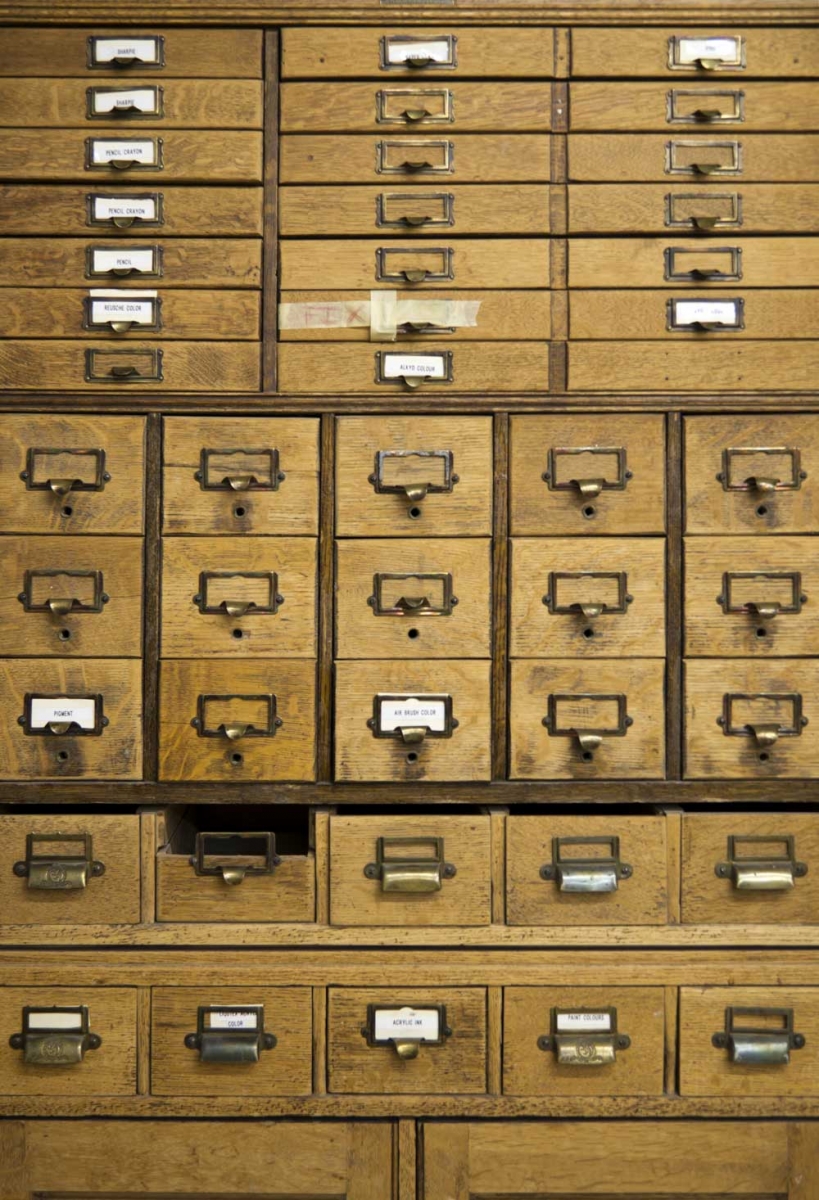
The studio is filled with beautiful antique drawer units. They hold David Haight’s collection of glass pieces and supplies.
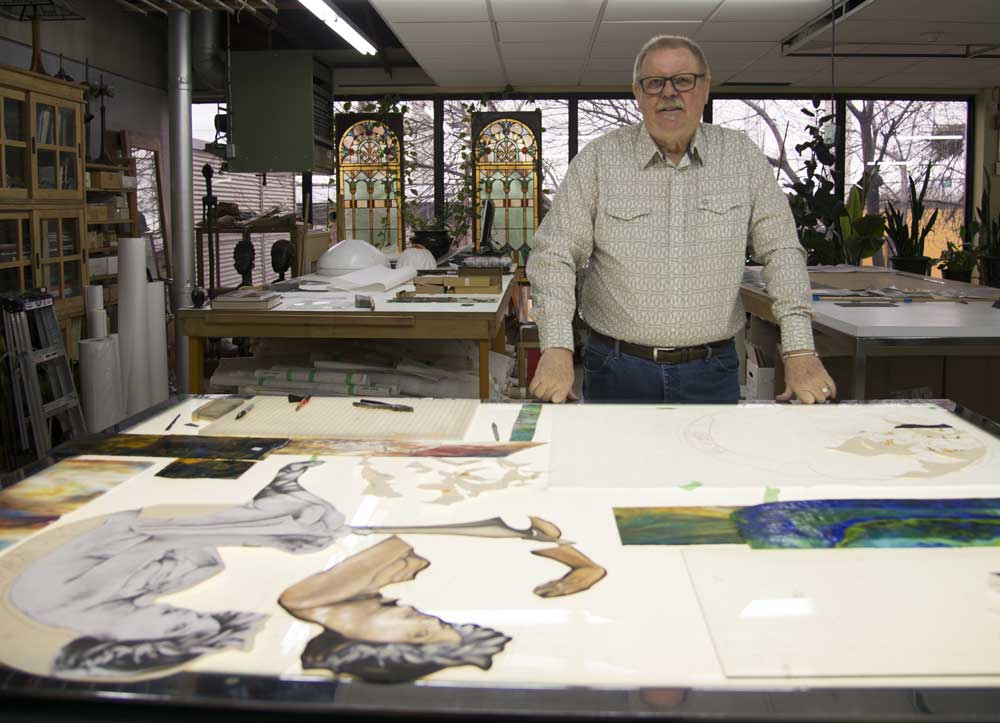
David Haight stands at a large light table where components of a current project are laid out. Always an aficionado of stained glass, he still has some of his earliest acquisitions, seen here hanging in the windows behind him.
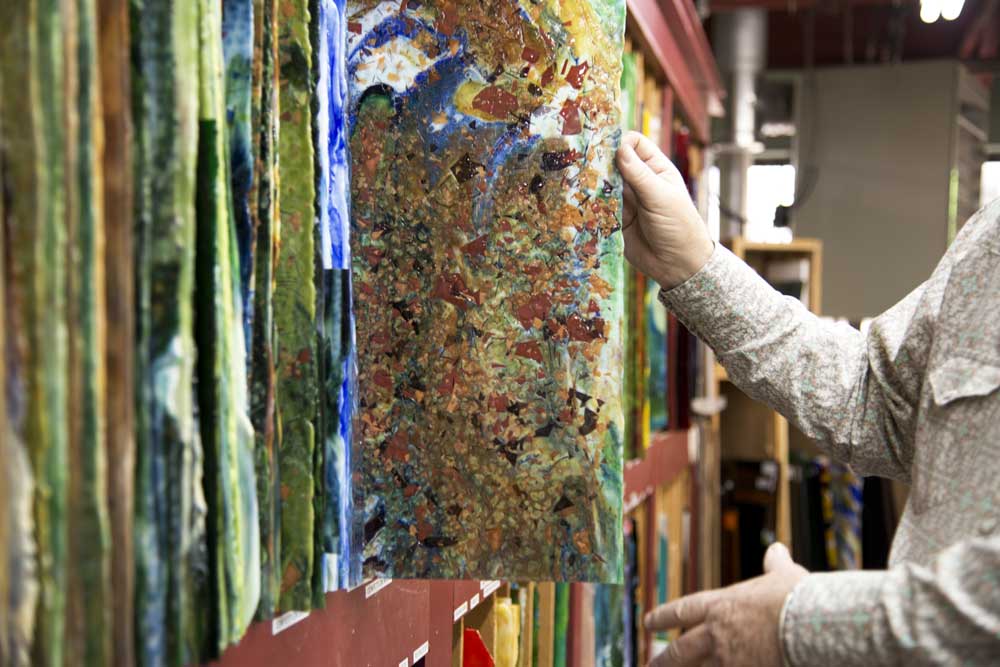
About one third of the huge studio space holds raw materials for sale and for use in the studio. Haight imports glass from producers all over the world, including sheets of hand-ladled confetti glass like this one. The creation of a sheet like this requires one person per colour, moving in perfect concert, ladling molten glass each in turn onto a table. The confetti effect is created by then inflating mouth-blown glass until it shatters, scattering tiny shards over the hot glass sheet. (Imagine blowing, then popping, a bubble gum bubble).
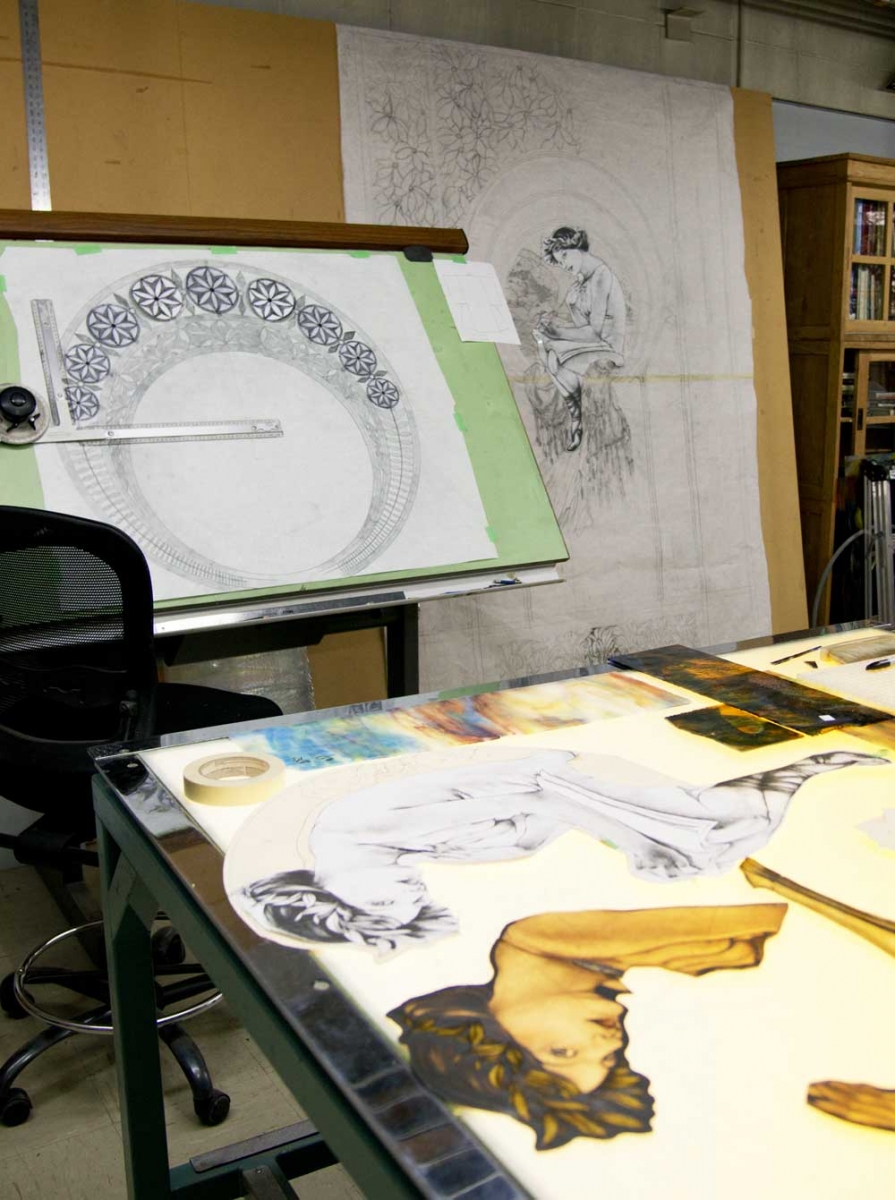
Several pieces of this hand-ladled glass are laid out here for possible inclusion in this huge commissioned project – a feature wall entirely of stained glass for a private residence. It will incorporate many types of glass, all producing different effects. The organic swirls of the hand-ladled glass, for instance, will add depth to landscape scenes, while a painted glass portrait of a woman (by artist Lori Sobkowich) forms the stunning focal point.
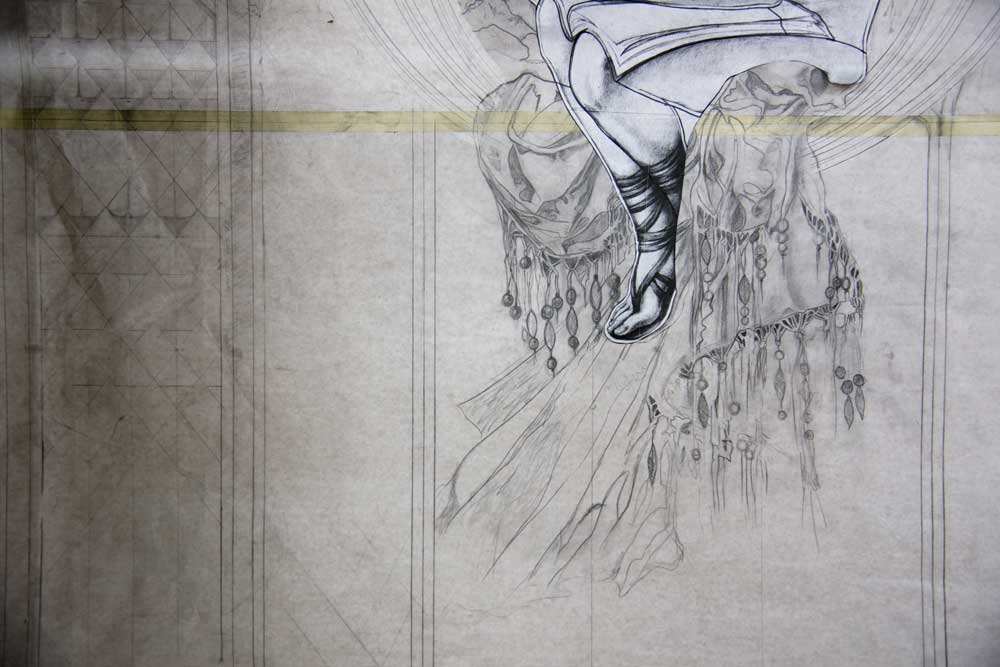
Large projects can take years to complete, with every detail painstakingly planned. For every element of the piece, designs are drawn and re-drawn, materials chosen, colours and kinds of glass are carefully selected and prepared before final assembly begins.
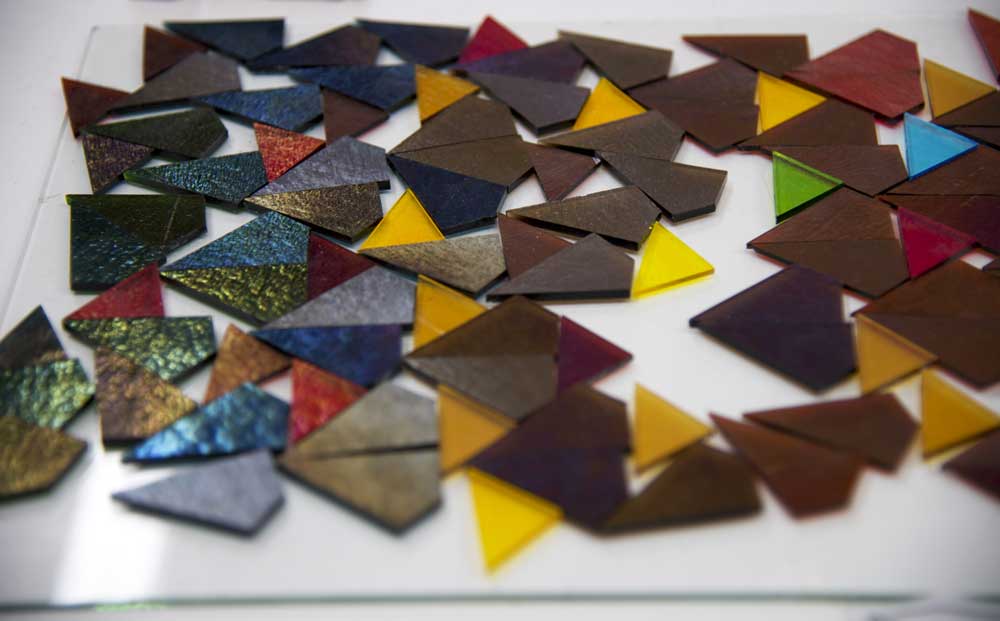
A small selection of the hundreds of tiny hand-cut pieces of glass Haight will incorporate into a current project. Because this part of the piece may not have natural light shining through it, Haight has selected a type of glass that has an iridescent finish so it will still sparkle regardless of how it is illuminated.
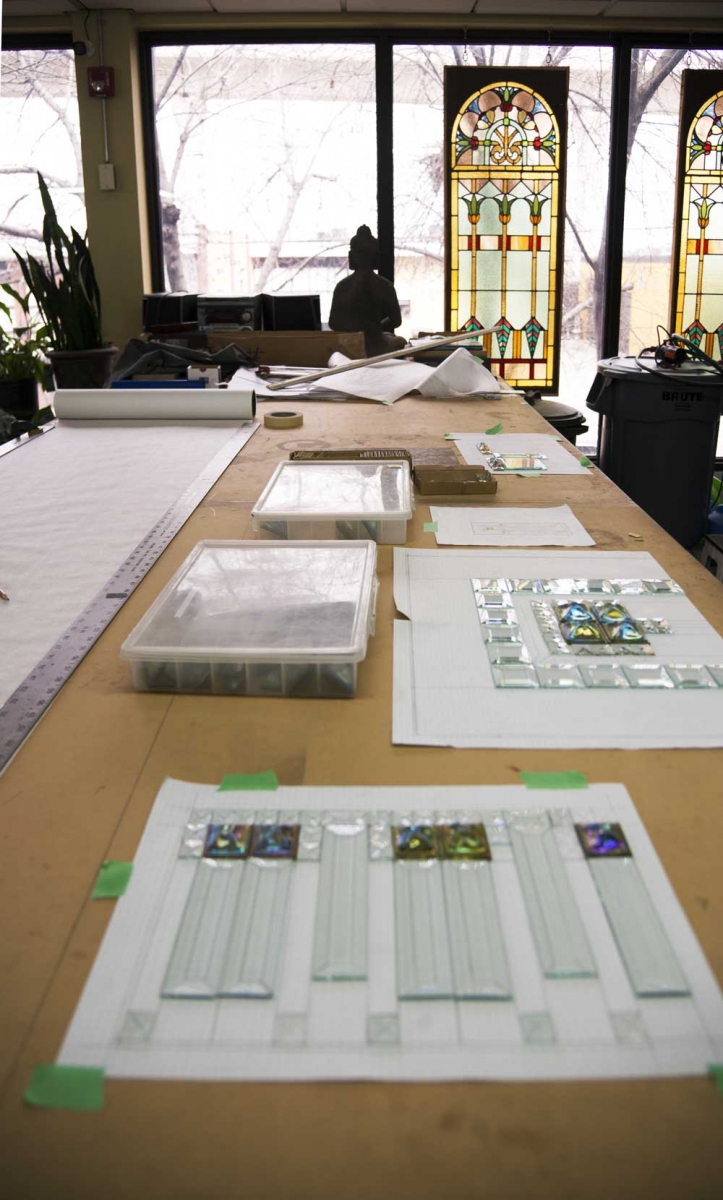
The design area of the studio has several large tables where works in progress can be laid out. These samples are waiting for a client’s approval before Haight transfers the final design to a large sheet of paper. The bins in the centre of the table contain some of the studio’s extensive collection of exquisite glass jewels and beveled glass (some of which are included in the samples on the table). Increasingly, many of the craftspeople who produce these specialty pieces are going out of business or retiring, making Haight’s collection more and more precious.
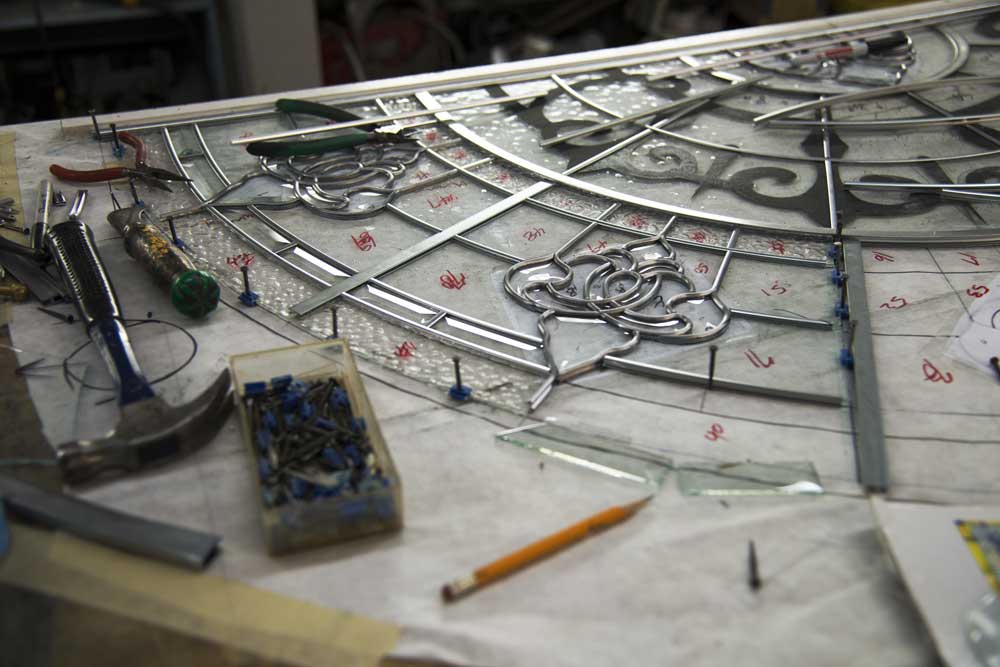
The components of this piece have been prepared and are now being assembled. It includes hand-cut and hand-beveled glass, in addition to some hand-painted elements that mimic the look of wrought iron.
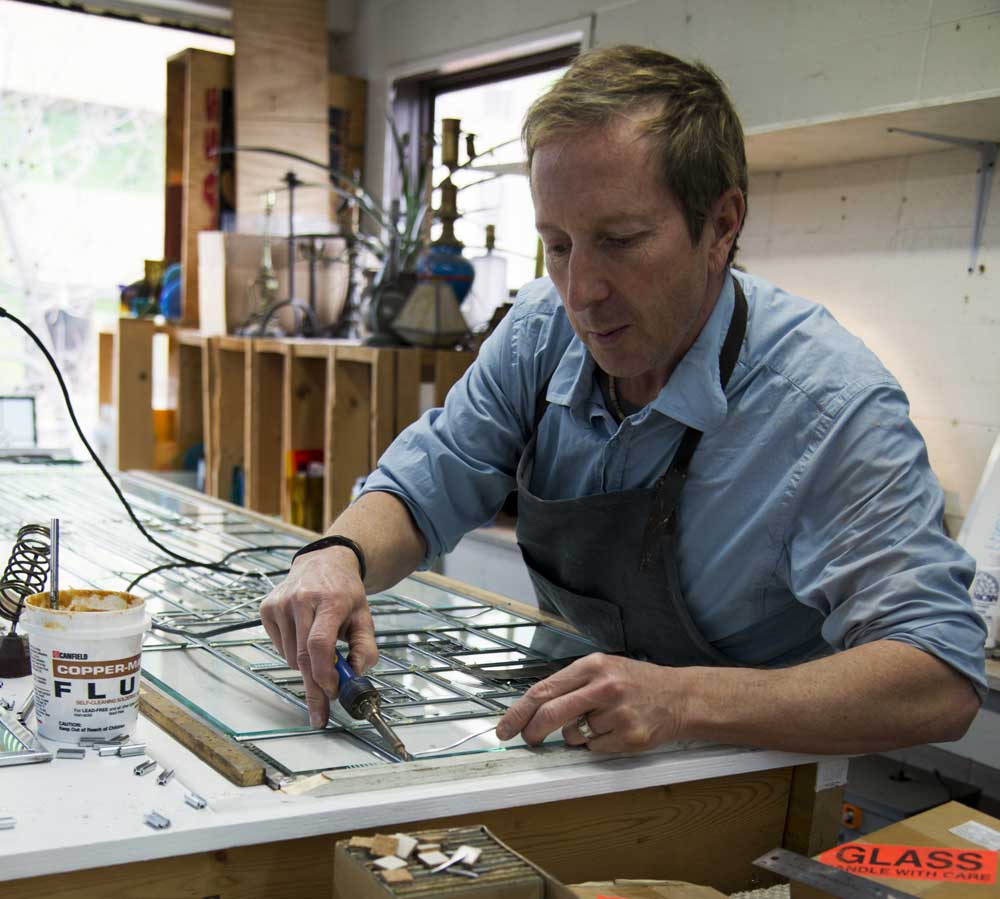
Ted Schneider, a craftsperson who works at the studio, solders the framework (called “came”) of a window. While lead is traditional, zinc and copper – stronger and lighter than lead – are now used as well. Lead came is quite soft, which is an advantage for restoration work: the metal can be carved away easily to allow damaged panes of glass to be replaced, a process that is not so straightforward with copper or zinc.
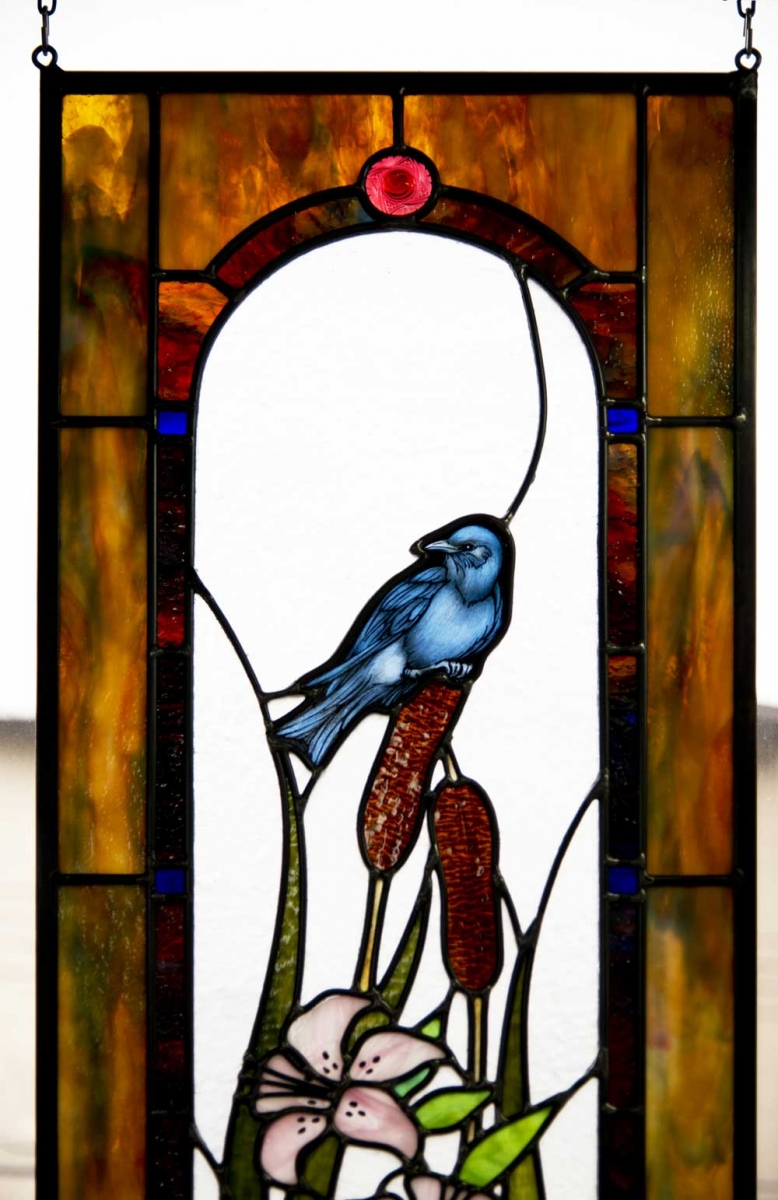
A completed window hangs in the studio, incorporating hand-painted glass (the bird), hand-ladled glass (the swirling amber panes), and a cast- glass jewel (the red piece at the top of the arch). Stained glass, explains Haight, is the only medium where you don’t quite know what you’ll get till the piece is entirely finished and hung in the light. You can make educated guesses with material choices, but it’s always the light that finally brings the piece to life and completes the work.
